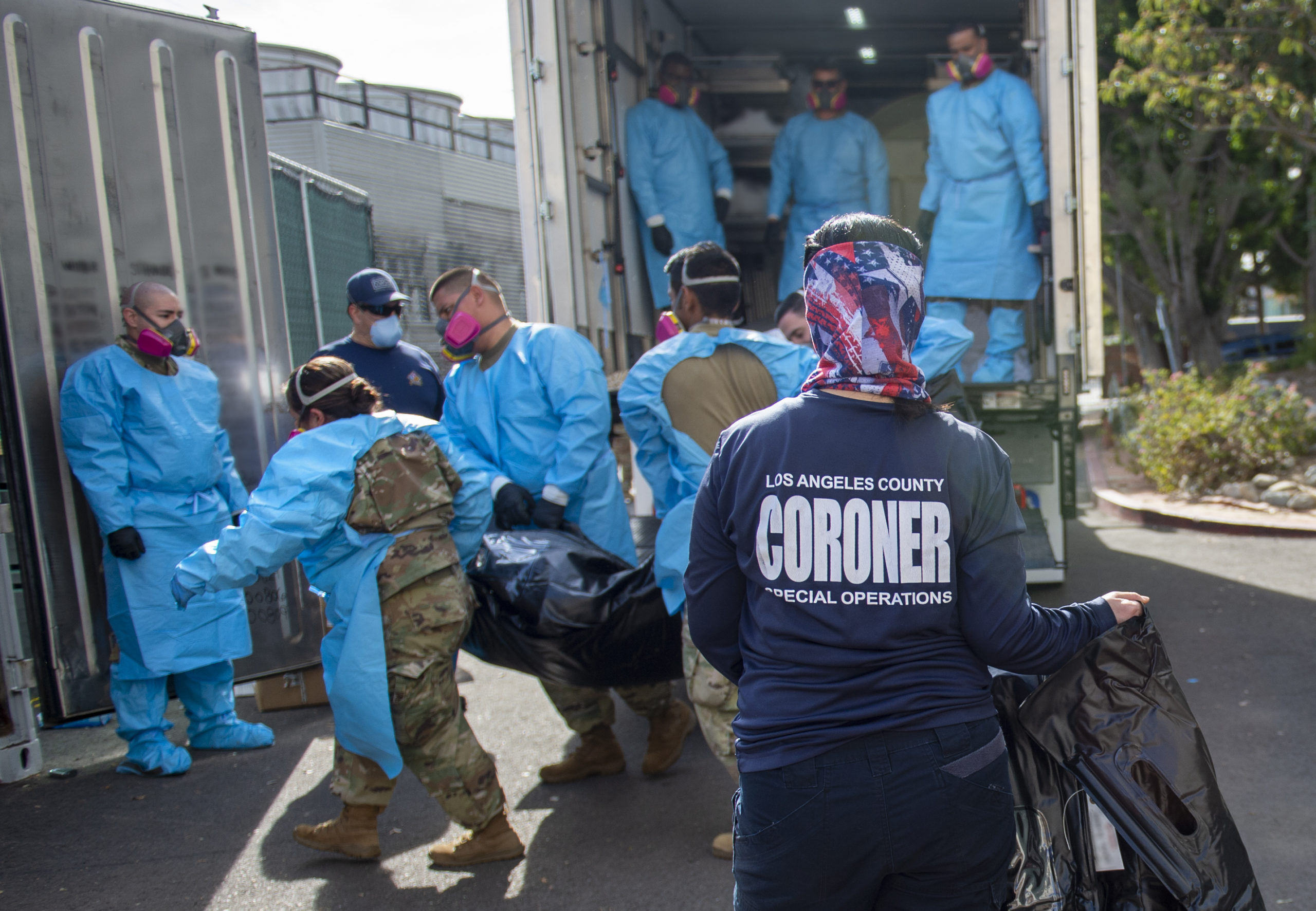As predicted by health officials, deaths related to COVID-19 are surging following the unprecedented spike in positive cases that have been reported for the past several weeks, according to city and county data.
County health officials Friday reported another 65 deaths related to COVID-19 after reporting 102 on Thursday, the highest number of single-day deaths since March 2021.
“Preliminary estimates from scientists at USC estimated that if everyone eligible was vaccinated, over the last 6 weeks there would have been 85% fewer cases with nearly 604,000 cases of COVID prevented, and 87% fewer hospitalizations with approximately 9,300 hospitalizations prevented,” County Director of Public Health Barbara Ferrer said in a statement.
Fewer cases and hospitalizations would directly translate to fewer deaths, according to health officials. For the seven days leading up to Jan.1, public health data shows that unvaccinated people were 23 times more likely to die from the virus compared to those who are fully vaccinated.
In Long Beach, meanwhile, health officials Friday reported six more coronavirus deaths for a total of 16 over three days, making it the deadliest week since March 2021. City data has a one-day delay in reporting, meaning Friday’s figures will be reported Monday.
Countywide, 4,792 people are hospitalized with COVID-19, officials reported Friday, the highest figure since early February 2021. Long Beach officials reported 336 hospitalizations, down slightly from a recent high of 367 and well below the pandemic high of 581 in January 2021.
Hospitalizations in the city, however, had dropped to as low as eight in June, according to city data. The majority of hospitalizations and deaths in Long Beach are unvaccinated people, according to health department spokeswoman Jennifer Rice Epstein.
Long Beach-area intensive care units are about 85% full, according to city data, with over 41% of patients being treated for COVID-19. During normal periods, ICUs are between 40% and 50% occupied, Epstein said.
From Jan. 2 through Jan. 8, unvaccinated people were twice as likely to contract the virus compared to those who are fully vaccinated with no booster, according to county health officials. Those with the booster had four times the protection from infection compared to the unvaccinated.
“Large scale vaccine adoption could change the pandemic’s trajectory with significant case and hospitalization reductions,” Ferrer said.
In Long Beach, nearly 80% of eligible residents age 5 and up have received at least one dose of a COVID-19 vaccine. Just over 71% of eligible residents are fully vaccinated against the virus. The city has removed booster data from its dashboard but as of Jan 12 only 32% of residents 18 and older had received a booster. Since then, the city has expanded booster eligibility to children as young as 12.
The county Friday reported 43,091 new cases of COVID-19, the sixth highest single-day figure since the onset of the pandemic. The city, meanwhile, reported 696 new cases after three days of reporting between 3,500 and 7,800 due to a backlog of tests. Prior to the backlog, the city was consistently reporting between 1,000 and 2,200 new cases per day.
Long Beach’s seven-day positivity rate and daily cases per 100,000 residents have begun trending down, now at 28% and 405.9, respectively. But those figures remain well above those of previous surges throughout the pandemic, according to city data.

